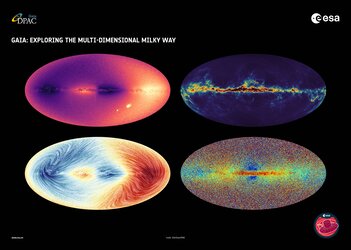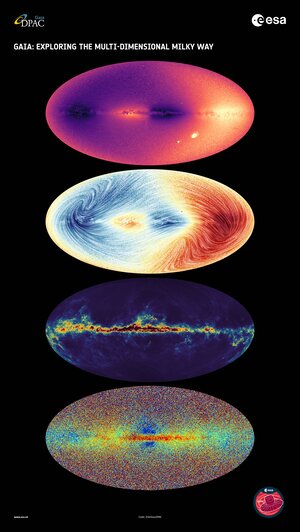

Gaia’s Milky Way in motion
ESA’s Gaia data release 3 shows us the speed at which more than 30 million objects in the Milky Way (mostly stars) move towards or away from us. This is called ‘radial velocity’. We can now see how the objects move over a large portion of the Milky Way’s disc.
The rotation of the disc, projected along the line-of-sight, is visible from the alternation of bright areas (moving away from us) and dark areas (moving toward us). Several objects whose radial velocity differs from that of their close environment are visible by contrast.
The Large and Small Magellanic Clouds (LMC and SMC) appear as bright spots in the lower right corner of the image. The Sagittarius dwarf galaxy is visible as a faint quasi-vertical stripe below the Galactic Centre.
Several globular clusters appear as tiny dots in the image, such as 47 Tucanae, the dark dot on the immediate left of the SMC.
Acknowledgements: ESA/Gaia/DPAC/CU6, D. Katz, N. Leclerc, P. Sartoretti and the CU6 team.





